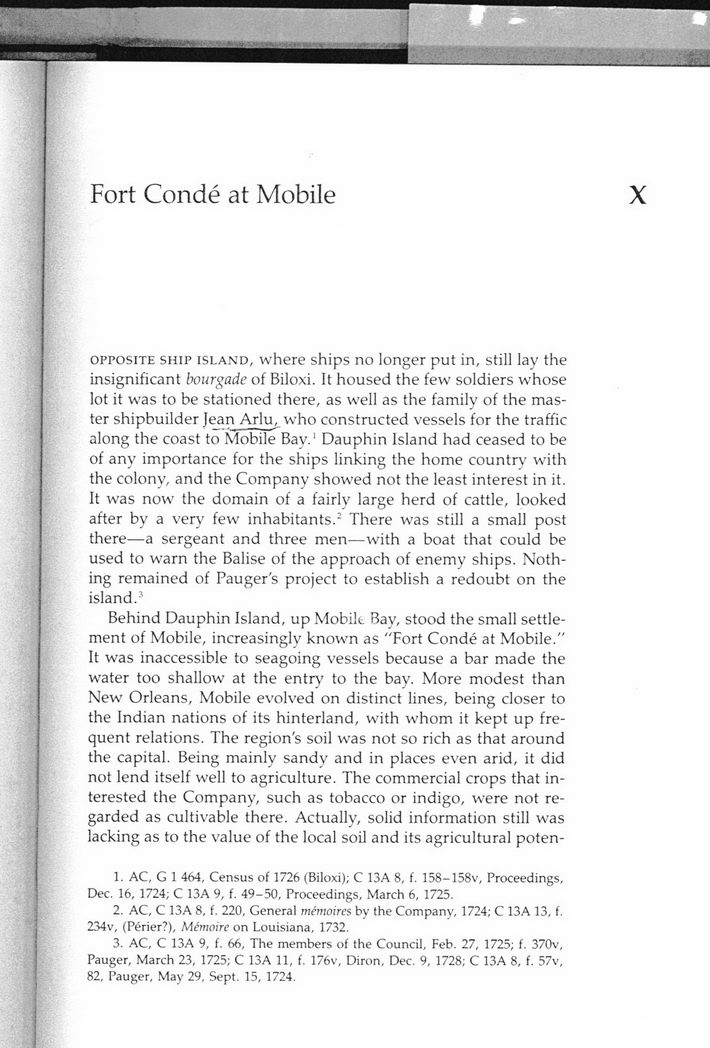This text was obtained via automated optical character recognition.
It has not been edited and may therefore contain several errors.
Fort Conde at Mobile opposite ship island, where ships no longer put in, still lay the insignificant bourgade of Biloxi. It housed the few soldiers whose lot it was to be stationed there, as well as the family of the master shipbuilder Jean Arlu^ who constructed vessels for the traffic along the coast to Mobile Bay.1 Dauphin Island had ceased to be of any importance for the ships linking the home country with the colony, and the Company showed not the least interest in it. It was now the domain of a fairly large herd of cattle, looked after by a very few inhabitants.2 There was still a small post there?a sergeant and three men?with a boat that could be used to warn the Balise of the approach of enemy ships. Nothing remained of Pauger's project to establish a redoubt on the island.3 Behind Dauphin Island, up Mobile Bay, stood the small settlement of Mobile, increasingly known as "Fort Conde at Mobile." It was inaccessible to seagoing vessels because a bar made the water too shallow at the entry to the bay. More modest than New Orleans, Mobile evolved on distinct lines, being closer to the Indian nations of its hinterland, with whom it kept up frequent relations. The region's soil was not so rich as that around the capital. Being mainly sandy and in places even arid, it did not lend itself well to agriculture. The commercial crops that interested the Company, such as tobacco or indigo, were not regarded as cultivable there. Actually, solid information still was lacking as to the value of the local soil and its agricultural poten- 1. AC, G 1 464, Census of 1726 (Biloxi); C 13A 8, f. 158-158v, Proceedings, Dec. 16, 1724; C 13A 9, f. 49- 50, Proceedings, March 6, 1725. 2. AC, C 13A 8, f. 220, General memoires by the Company, 1724; C 13A 13, f. 234v, (Perier?), Memoire on Louisiana, 1732. 3. AC, C 13A 9, f. 66, The members of the Council, Feb. 27, 1725; f. 370v, Pauger, March 23, 1725; C 13A 11, f. 176v, Diron, Dec. 9, 1728; C 13A 8, f. 57v, 82, Pauger, May 29, Sept. 15, 1724.

Arluc 001